The Architectural Barriers Act (ABA)
The Architectural Barriers Act (ABA) requires access to facilities that are designed, built, or altered with federal funds or leased by federal agencies. Passed in 1968, it is one of the first laws to address access to the built environment. The law applies to federal buildings, including post offices, social security offices, federal courthouses and prisons, and national parks. It also covers non-federal facilities, such as public housing units and mass transit systems, built or altered with federal grants or loans. Coverage is limited to those funding programs that give the federal agency awarding grants or loans the authority to establish facility standards. The Americans with Disabilities Act (ADA) of 1990 has similar design mandates but applies to facilities in the private sector and the state/local government sector without regard to federal funding.
Four agencies establish the ABA Standards according to guidelines issued by the Access Board: the General Services Administration (GSA), the Department of Defense (DOD), the Department of Housing and Urban Development (HUD), and the U.S. Postal Service (USPS). The latest editions of the ABA Standards issued by GSA, DOD, and USPS are substantively the same and replace the earlier Uniform Federal Accessibility Standards. HUD’s update of the standards is still pending. Regulations and directives from these agencies apply the standards to facilities within their purview.
Postal Facilities

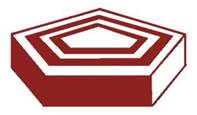
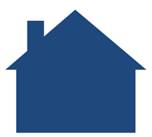

Military Exclusions
The ABA exempts military facilities and spaces designed and constructed for use exclusively by “able-bodied military personnel,” including Reserve and National Guard facilities. Facilities used by DOD in emergencies and natural disasters are also exempt. DOD nonetheless recommends that exempted military facilities meet the standards “to the maximum extent that is reasonable and practicable” because facility uses often change over time.
Enforcement of the ABA
Under the ABA, the standard-setting agencies (GSA, DOD, HUD, and USPS) are responsible for making sure that facilities under their authority meet the standards. The Access Board also plays an enforcement role by examining complaints or allegations of non-compliance. Upon receipt of a complaint, the Board opens an investigation to determine whether the facility is covered by the ABA and, if so, whether it meets the applicable standards. If a covered facility is not in compliance with the standards, the Board will pursue a corrective action plan from the responsible entity and monitor the case until violations are remedied. Investigations are conducted in cooperation with the appropriate federal agencies, and cases are typically resolved amicably.
The Access Board also provides free technical assistance and training on the ABA Standards to the public, federal agencies, architects, advocates, and others.
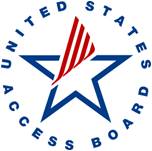
Filing an ABA Complaint
Filing an ABA complaint with the Access Board is easy to do. All the Board needs is the facility name and address and a brief description of the access issues. Complaints must be received in writing by email enforce@access-board.gov, mail, fax, or through the Board’s website. The identity of complainants is kept confidential.Technical Assistance
Technical assistance is available through the Board’s toll-free help line and by email: ta@access-board.gov, (800) 872-2253 (voice), (800) 993-2822 (TTY)The Rehabilitation Act (Section 504)
Another law that requires compliance with access standards is the Rehabilitation Act of 1973. Section 504 of this law requires access to programs and services that are funded or conducted by the federal government. By attaching compliance requirements to program monies, its scope is generally broader than the ABA’s. Compliance with access standards is required under Section 504 where covered programs involve facility construction and alteration. Section 504 also may require retrofits to existing facilities as necessary to provide access to programs and services. Federal agencies are responsible for issuing regulations to ensure compliance by funding recipients and have designated Section 504 officials. It is expected that most federal agencies will update their 504 regulations to apply design requirements consistent with those of the ABA and ADA to facilitate compliance.
Current Edition of the ABA Standards
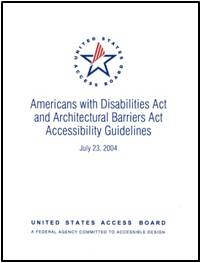 The current ABA Standards are based on the Board’s updated ABA guidelines (2004).
The current ABA Standards are based on the Board’s updated ABA guidelines (2004).
The design requirements of the ABA are first developed by the Access Board as guidelines. The Board’s guidelines set a minimum baseline for the enforceable standards issued by GSA, DOD, HUD, and USPS. The current ABA Standards (except those issued by HUD) are based on updated guidelines the Board issued in 2004 without any substantive changes.
Differences Between the ABA and ADA Standards
The Board also maintains guidelines for non-federal facilities covered by the ADA. These guidelines serve as the basis for ADA Standards issued by the Department of Justice (DOJ) and, in the case of facilities used to provide designated public transportation, the Department of Transportation (DOT). The Board jointly updated its ADA and ABA guidelines to make them more consistent. As a result, the current ABA Standards and ADA Standards are very similar, but there are several substantive differences between them.
The ABA Standards differ from the ADA Standards in these areas:
Modifications and Waivers (§F103)
Requests for a modification or waiver of the ABA Standards must be based on need and processed through the appropriate standard-setting agency, while the ADA Standards permit “equivalent facilitation” alternatives providing equal or greater access.
Work Areas
The ABA Standards generally require full access to work areas, while requirements for work areas in the ADA Standards are more limited (§203.9 and §206.2.8).
Additions (§F202.2)
The ABA Standards provide more stringent requirements for additions.
Leased Facilities (§F202.6)
The ABA Standards include requirements for newly leased facilities not contained in the ADA Standards.
Exceptions for Vertical Access/ Elevators (§F206.2.3)
Provisions unique to private sector facilities in the ADA Standards, including an exception from the requirement for vertical access or elevators, are not included in the ABA Standards (a more limited exception for public sector facilities is included in both the ABA and ADA Standards).
Emergency Transportable Housing (§F233, §809)
The ABA Standards include requirements for emergency transportable housing provided by the government in disasters and emergencies. Corresponding and additional revisions made to §F106.5, § F202.6, §F203.9, §F205.1, §F206, §F208, §F215.5, §F228.2, §405, §409.1, §604.5, §606, §607.4, §608 and §804.3.
Outdoor Developed Areas (§F244 - §F248, §1011 – §1019)
The ABA Standards address access to outdoor areas developed by the federal government, including trails, picnic and camping areas, and beach access routes. The ADA Standards do not yet include similar requirements for non-federal sites.
The ADA Standards as implemented by DOT and DOJ include unique provisions not contained in the ABA Standards:
DOT’s ADA Standards for Transportation Facilities
DOT’s ADA Standards modify provisions for accessible route location (§206.3), bus stops/stations (§810.2.2), and rail station platform (§810.5.3), and require detectable warnings on curb ramps (§406.8).
DOJ’s ADA Standards and Regulations
Unique provisions in the DOJ’s ADA Standards address scoping for assembly areas (221), medical care facilities (223), transient lodging, including housing at places of education (224), detention and correctional facilities (232), and residential dwelling units and social service establishments (233).
Model Building Codes and Industry Standards
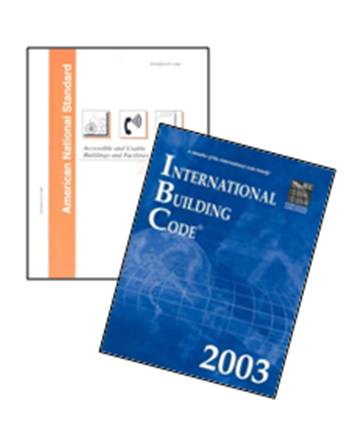
The current ABA Standards have been harmonized to a significant extent with industry standards and model building codes, including the International Building Code (IBC). The IBC contains application and scoping provisions for accessibility (in chapters 10, 11 and 34) that correspond to those in the ABA Standards (chapters F1 and F2). For technical provisions, the IBC references a consensus standard developed through the American National Standards Institute (the ANSI A117.1 standard) which is highly consistent with the technical chapters (3 – 10) of the ABA Standards. There are some substantive differences. For example, unlike the ABA Standards, the ANSI standards require an additional vertical grab bar at water closets, transfer shower stalls, and tubs.
The ABA Standards also reference several industry standards, including the ASME elevator safety code and the NFPA 72 Fire Alarm Code. In addition, the ABA Standards reference provisions in the IBC covering accessible means of egress.
Chapter 1: Application and Administration
Purpose
[§F101]
The ABA Standards apply to newly constructed or leased facilities and to alterations and additions. Since the Board jointly published the ABA guidelines with its ADA guidelines, the letter “F” (for “federal”) precedes section numbers in the application and scoping chapters of the ABA guidelines. While the scoping and technical requirements for new construction also apply to alterations and additions, provisions and exceptions specific to existing facilities and elements are provided throughout the document. Requirements for additions and leased facilities are scoped separately but reference the same technical criteria.
Existing Facilities
In existing facilities, the ABA Standards apply directly to altered areas and additions. While the ABA does not have retrofit mandates, other laws do. Section 504 of the Rehabilitation Act, which requires access to federally funded or conducted programs, may necessitate retrofits where no alterations are planned. While this “program access” requirement can sometimes be satisfied operationally, such as by relocating a program, in many cases retrofits to existing facilities are necessary. The Rehabilitation Act also requires accommodations for employees with disabilities in the federal sector under Section 501.
Existing facilities previously built, altered, or leased according to earlier editions of the ABA Standards, such as the Uniform Federal Accessibility Standards (UFAS), generally do not have to be modified to meet the current standards except where altered. Existing facilities that are newly leased must be brought into compliance with relevant requirements in the current standards (but existing elements that comply with earlier ABA Standards do not have to meet the current standards unless altered).
Furnishings and Equipment

The ABA Standards, like most building requirements and codes, apply to those elements that are fixed or built-in. Moveable elements and furnishings are generally not addressed or covered by the standards. Other regulations, such as those issued under the Rehabilitation Act, may impact non-fixed elements, such as changing office furniture to accommodate an employee.
Unless specifically permitted, access features required by the standards must be fixed or built-in even though portable alternatives may be available. This includes requirements for assistive listening systems, visual alarms, ramps, and platform lifts.
Maintenance of Accessible Features
It is important that accessible features be properly maintained in working order. Features of facilities and equipment required to be accessible should be maintained in operable working condition, except for isolated or temporary interruptions in service due to maintenance or repairs. However, it is important that accessible features be properly maintained in working order.
Dimensions for Adults and Children
[§F102]
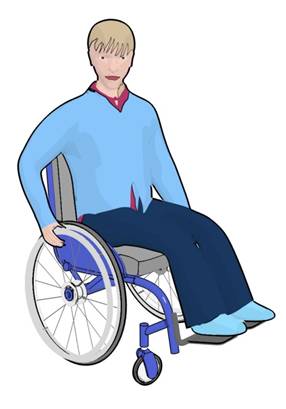
The ABA Standards provide technical specifications for building elements designed specifically for use by children 12 and younger. These provisions address access for children to:
- drinking fountains (§602)
- water closets and toilet compartments (§604)
- lavatories and sinks (§606) and
- dining and work surfaces (§902).
The standards also include requirements for play areas (§1008) and recommendations (advisory notes) on children’s reach ranges (§301.1) and ramp handrails (505.4).
The standards do not specify where or when elements are to be designed for children. This determination is left to other building requirements or regulations, good practice, client preference, or other factors. The provisions for children’s use (other than those for play areas) are structured as exceptions to specifications based on adult dimensions, and following an exception is always optional. However, where the decision is made to design certain elements based on children’s dimensions and to use the exceptions, the alternate specifications provided in the standards must be followed. The standards do not require provision of additional accessible elements in order to separately accommodate both children and adults, although doing so may be advisable in mixed use spaces. For example, in some restrooms at facilities such as schools and children’s museums, it is a good idea to provide a wheelchair accessible toilet compartment for adults and another for children.
Modifications and Waivers
[§F103]
The standard-setting agencies (GSA, DOD, HUD, and USPS) are authorized to grant modifications and waivers of the ABA Standards on a case-by-case basis where clearly necessary. Modifications and waivers are rare and are usually considered only in unique circumstances that make compliance with certain provisions exceptionally problematic. The Access Board is responsible for making sure that modifications and waivers are based on findings of fact and are consistent with the ABA.
Requests for modifications or waivers are reviewed by designated officials or departments:
- Administrator of General Services upon request forwarded by agency or GSA department heads (for facilities other than military, postal, and residential facilities)
- Principal Deputy Under Secretary of Defense for Personnel and Readiness as forwarded through the DOD chain of command (defense facilities)
- USPS Facilities Headquarters, Design and Construction Programs (postal facilities)
- Secretary of Housing and Urban Development (residential facilities)
Conventions
[§F104]
Most dimensions in the standards are specified as a minimum, maximum, or range. In a few areas, an absolute dimension is specified.
Construction and Manufacturing Tolerances
A tolerance is an unintended, but permitted (i.e., “tolerated”), variation from a specified dimension resulting from the process of construction or manufacture. The ABA Standards recognize conventional industry tolerances for dimensions not expressed as a range. This applies to field work, not design work. Tolerances necessary for a particular manufacturing process are also permitted. Information on specific tolerances may be available from industry and trade organizations, code groups and building officials, and published references.
Many dimensions in the ABA Standards are expressed as a range instead of an absolute so that designers can allow some room for minor deviations in construction or manufacturing. Tolerances do not apply to dimensions specified as a range.
Grab Bar Diameter and Clearance
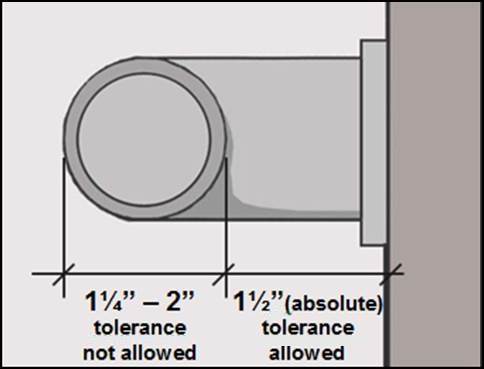
Calculation of Percentages
Some provisions in the ADA Standards specify a minimum number of elements or spaces as a minimum percentage or proportion. Rounding up to the next greater whole number is required where fractions or remainders occur. For example, if the standards require access to at least 5% of an element and a total of 25 are provided, at least 2 must be accessible (rounding up from 1.25).
In the case of specifications for dimensions or sizes that involve percentages or ratios, rounding down for values less than one half is allowed.
Figures in the Standards
Figures are provided in the standards for informational purposes (unless stated otherwise) to illustrate dimensions and requirements contained in the text. For compliance purposes, the text governs.
Referenced Standards
[§F105]
The standards reference industry standards for certain elements, including automated doors (ANSI/BHMA standards), means of egress (International Building Code), fire alarms (NFPA National Fire Alarm Code), elevators and platform lifts (ASME Safety Code), and play surfaces (ASTM standards).
The specific editions of these documents referenced by the ABA Standards must be followed. The Access Board intends to update references to these standards and codes to recognize later editions, as appropriate.
Definitions
[§F106]
Terms used in the standards are defined in this section. Some terms are defined not in the standards, but in regulations and directives from standard-setting agencies, such as those pertaining to alterations to “primary function areas” and requirements for accessible paths of travel. Defined terms in referenced standards govern when not defined in either the ABA Standards or regulations. Definitions provided by collegiate dictionaries are relevant for terms not defined by either the ABA Standards, regulations, or referenced standards.
Common Questions

What types of Federal funding are covered by the ABA Standards?
The ABA Standards apply to facilities that are federally funded. This includes facilities that are designed, built, altered, or leased by, or on behalf of, the Federal government. The ABA Standards also apply to other types of facilities that receive federal funding, but ABA coverage is limited to federal grants or loans that are used for facility design, construction, or alteration where the federal agency that awards the grant or loan has the authority to establish facility standards.
Does an existing facility that complies with UFAS (or an earlier ABA standard) have to be brought into compliance with the latest edition of the standards under the ABA?
No, if the facility meets the standards that were in effect at the time of its construction, alteration, or leasing. However, any new alterations or additions must comply with the current ABA Standards. Also, existing facilities that are newly leased by the federal government are subject to provisions in the current standards for leased facilities. Existing elements that comply with earlier ABA Standards are not required to meet the current ABA Standards unless altered, as noted in the standards (§F203.2).
Are federal facilities required to meet the ADA Standards as well as the ABA Standards?
Federal government facilities are subject only to the ABA Standards (which are very similar to the ADA Standards). However, non-federal facilities that receive federal funding may be subject to the ABA Standards in addition to the ADA Standards. For example, a county courthouse or jail built with federal monies would be covered by the ADA Standards (as a local government building) and by the ABA Standards (as a consequence of federal funding). Also, in a privately owned office building covered by the ADA Standards, space leased by a federal agency would be subject to the ABA Standards as well.
Can later editions of the industry standards or building codes referenced by the ABA Standards be used?
The specific editions of these standards referenced by the ABA Standards are to be followed (although the Access Board intends to update references to keep them current).




